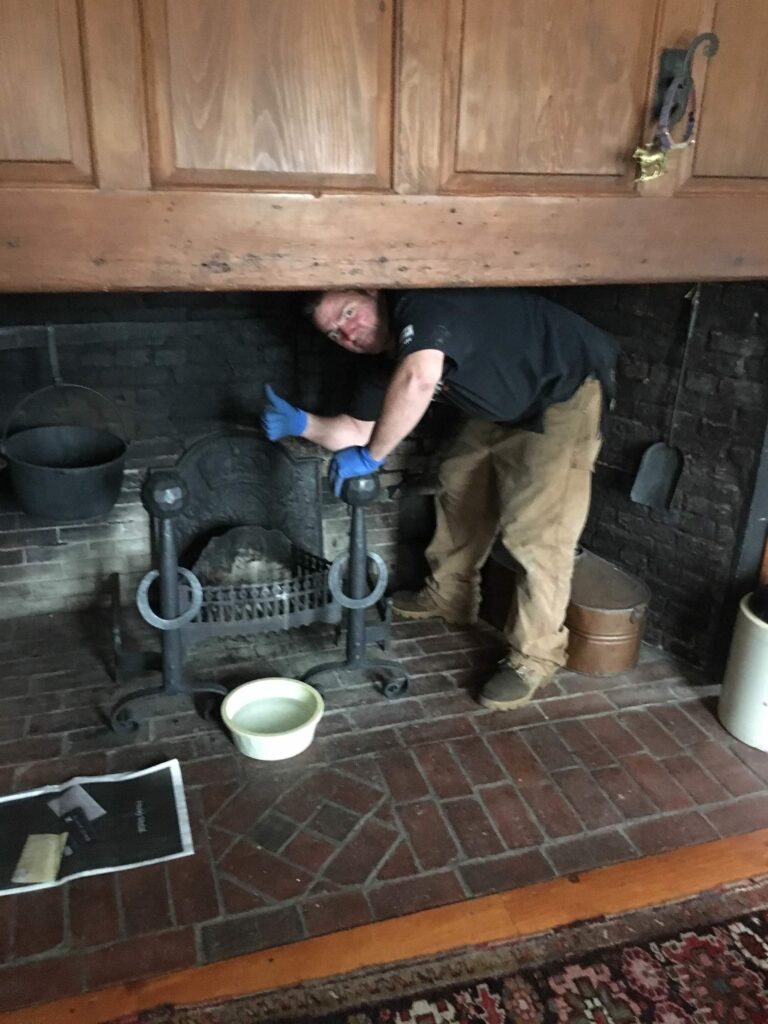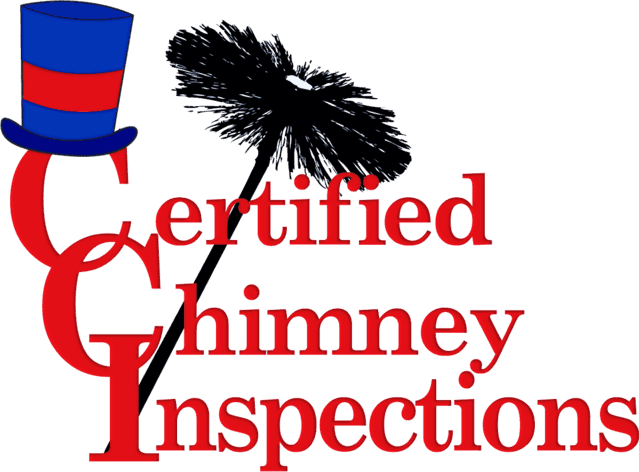Chimney Inspection Massachusetts
The Importance of Chimney Inspections in MA
Chimney inspections play a crucial part in taking care of your Massachusetts chimney and/or fireplace. The cold winters Massachusetts experiences causes many households to rely on their chimneys for at least the partial heating of their home. If that’s you, it is absolutely necessary to make sure your fireplace functions properly. This ensures the safe and efficient operation of your heating systems and chimney flue. This will reduce the risk of carbon monoxide poisoning and accidental fires occurring. A level 1 chimney inspection in a normal inspection for any home or business. It will help identify and address any issues within your chimney before they escalate.
Massachusetts also has a rich architectural heritage, with many homes featuring historic chimneys. They may have unique designs, materials, or structural elements that require specialized knowledge for their inspection. Ensuring the integrity of historic chimneys helps preserve the state’s architectural legacy and maintains the aesthetic value of properties.
Furthermore, Massachusetts is known for its strict building codes and regulations. Chimney inspections are often mandated by these regulations to ensure compliance with safety standards. Failure to comply may result in fines or legal repercussions. Additionally, when selling or buying a home in Massachusetts, a chimney inspection is often required as part of the property inspection process, providing assurance to both buyers and sellers.

Lastly, chimney inspections contribute to overall environmental conservation efforts. Over time, chimneys can accumulate soot and debris which can hinder proper ventilation and increase pollution. Regular chimney inspections and cleanings ensure that we are reducing emissions and minimizing the impact on air quality when we use our wood or pellet burning heating elements.
In summary, chimney inspections in Massachusetts are vital for ensuring your home’s safety, compliance with regulations, preserving architectural heritage, and promoting environmental responsibility. Regular inspections help maintain the functionality and longevity of your chimney; safeguarding homes, and the well-being of residents.
Our Chimney Inspection Process
A Level 1 chimney inspection is the most basic type of chimney inspection and is typically performed when there have been no changes to the system and no known problems. Here is a step-by-step process for conducting a Level 1 chimney inspection:
- Gather the necessary tools and equipment for the inspection, such as a flashlight, mirror, camera, ladder, and protective gear.
- Ensure the fireplace or heating appliance is cool and not in use.
- Notify the homeowner or occupant about the upcoming inspection and explain the process.
- Inspect the exterior of the chimney for any signs of damage, such as cracks, loose bricks, or deteriorating mortar.
- Check the chimney cap or spark arrestor for proper installation and any signs of damage or obstruction.
- Inspect the chimney crown for cracks or other signs of deterioration.
- Examine the chimney flashing (the seal between the chimney and the roof) for any signs of damage or leaks.
- Assess the condition of the chimney liner, if visible, for any signs of cracks, deterioration, or blockages.
- Open the damper and visually inspect the interior of the firebox or appliance.
- Use a flashlight or mirror to check for any visible damage or signs of creosote buildup.
- Inspect the hearth and surrounding areas for any signs of damage, such as cracks or loose bricks.
- Take photographs or videos of any observed damage or areas of concern.
- Make detailed notes of the inspection findings, including any recommendations for repairs or further inspections.
- Provide a written report to the homeowner or occupant, summarizing the inspection findings and any necessary actions.
- Discuss the inspection findings with the homeowner or occupant, answering any questions they may have.
- Provide recommendations for regular maintenance and safety practices, such as chimney cleaning or the installation of carbon monoxide detectors.
- If necessary, schedule any recommended repairs or further inspections.
Remember that the specific steps may vary depending on the chimney type, local regulations, and the inspector’s expertise. It’s always recommended to consult a professional chimney inspector or a certified chimney sweep for accurate and thorough inspections.
Types of Chimney Inspections
Chimney inspections are an important aspect of maintaining the safety and efficiency of a chimney system. There are three different levels of chimney inspections that are commonly recognized by professionals in the industry. These levels are standardized by organizations such as the National Fire Protection Association (NFPA) and the Chimney Safety Institute of America (CSIA). Let’s take a look at each level:
1. Level 1 Chimney Inspection
A Level 1 chimney inspection is the most basic and commonly performed type of inspection. It is recommended for chimneys that have been regularly used and maintained without any significant changes to the system. During a Level 1 inspection, the chimney professional will examine the readily accessible portions of the chimney, including the interior and exterior components, to ensure that they are structurally sound and free from any blockages or obstructions. The focus is on checking for basic functionality, safety, and compliance with building codes.
2. Level 2 Chimney Inspection
A Level 2 chimney inspection is more comprehensive than Level 1 and is typically recommended in specific situations. This level of inspection is required when there have been changes made to the chimney system, such as a change in fuel type, installation of a new appliance, or after an event like a chimney fire or earthquake. Level 2 inspections are also necessary when a property is being sold or transferred. In addition to the checks performed in a Level 1 inspection, Level 2 inspections involve the use of specialized tools and equipment, such as video cameras or other remote-sensing devices, to examine the internal structure of the chimney system. This allows the inspector to assess the condition of the flue liner, joints, and other concealed areas that cannot be easily seen.
3. Level 3 Chimney Inspection
A Level 3 chimney inspection is the most comprehensive and intrusive type of inspection. It is conducted when serious hazards are suspected in the chimney system, which may involve the removal of components or portions of the building structure to access concealed areas. Level 3 inspections are relatively rare and are typically carried out when Level 1 or Level 2 inspections indicate a potential problem that requires a more in-depth assessment. These inspections are usually performed after a chimney fire, severe weather event, or when major structural changes or repairs are needed.
It’s important to note that the specific requirements and scope of each level of inspection may vary slightly depending on the professional organization, local regulations, or the individual chimney sweep or inspector. It is recommended to hire a certified chimney professional or inspector who can accurately assess and determine the appropriate level of inspection needed for your chimney system.
How Often Should You Get Your Chimney Inspected?
It is recommended to get your chimney inspected in Massachusetts at least once a year to ensure its safety and functionality.
How Much Does Chimney Inspection Cost in MA?
The price for a Certified Chimney Inspection in Massachusetts is $99.95.
How Long Does A Chimney Inspection Take in MA?
A basic level chimney inspection from our company will only take about 20 minutes to complete. A level 2 inspection will take closer to 40 minutes because of the equipment we need to use. The more in depth the inspection the longer it will take.
